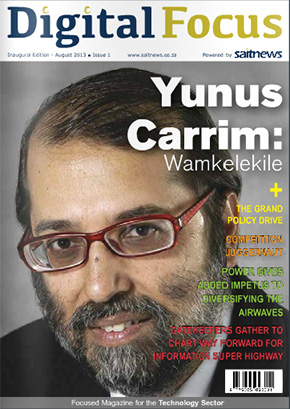Why Multisourcing Works
 Several years ago Gartner suggested that companies should change their traditional approach of outsourcing their information technology services and business processes to a single vendor and start thinking about the new world of multisourcing when more than one supplier is engaged.
Several years ago Gartner suggested that companies should change their traditional approach of outsourcing their information technology services and business processes to a single vendor and start thinking about the new world of multisourcing when more than one supplier is engaged.
The concept raised a number of questions – who would manage competing vendors, how would finger-pointing be stopped when things go wrong and how do you get competitors to work together for the benefit of the customer?
Most of these questions were asked due to the mistaken belief that once the contract was signed, the outsource partner and the contract would manage the service. That is not true. Management of the relationship with the service provider is essential for the success of any outsource project, particularly as the needs of the organisation grow in complexity.
The modern outsource environment demands not just cost savings (a factor of declining importance) but strategic benefit to the outsourced organisation. Competence, culture and a harmonious working relationship between vendor and customer are more important predictors of success in outsourcing than choosing the bidder which offered the lowest overall price.
Few organisations can genuinely claim to have expertise in every facet of the complex systems, technology and business processes that large companies outsource. Multisourcing enables the customer to choose the best supplier in each category of services they require.
Whilst this may cost more, it is often better value for money. Choosing the best supplier in a class of services should lessen the need for subcontracting so the mark-up charged by prime contractors on their subcontractors fees can be avoided.
The model has promoted black economic empowerment in South Africa. Start-up black owned service providers cannot compete equally with the established vendors on large outsourcing tenders. The multisourcing model avoids the necessity for them to do so.
Multisourced environments keep vendors at their sharpest. A complacent vendor will soon be shown up when compared with other more energetic suppliers. Multisourcing therefore encourages enthusiasm, original thought and top quality service.
Whilst multisourcing can deliver real benefit to an outsourced organisation, it is also possible to get it wrong. Even more so than in single sourced projects, multi-sourced contracts and relationships do not take care of themselves.
Cooperation between the group of vendors needs to be developed and someone needs to manage the relationships between the vendors themselves and between the vendors and the customer. The project governance structure required is therefore more elaborate than the governance requirements of single sourced projects.
Every multisource arrangement needs a service aggregator, one entity which takes overall responsibility for the proper delivery of the outsourced services. Occasionally clients take on that role but a preferable model is to appoint one service provider to that role. They report to the client and must resolve issues between the service providers.
A service aggregator is highly incentivised to investigate and resolve service problems because they are answerable to the client if the services as a whole do not meet the customer’s requirements.
An operational level agreement between the various service providers is advisable. Most mature service providers will insist on this: typically they are going to have to work with the other vendors for a number of years. Having no or indistinct principles as to how they should work together is a recipe for unhappy relations. The service aggregator should take the lead in establishing an operational level agreement.
Multisourcing has challenges which, properly handled, should easily be surpassed by its advantages. The concept is not, however, appropriate in all circumstances. It works best when large, complex organisations outsource a multiplicity of functions. Multisourcing for smaller organisations can add unnecessary convolution and cost.
Multisourcing requires more vendor management from the customer and that costs money. Also, the costs of exiting an outsourced environment are often disregarded during the early phase of excitement when the contract is being signed. These costs are usually sizeable and terminating the services of several outsource vendors can involve several times the cost of one termination.
Multisourcing is not an answer on its own. The costs, organisational needs and desired outcomes of an outsource project, whether single- or multisource should be fully considered before engaging a supplier or suppliers and the eventual contractual structure needs to be clear and effective.
By Rohan Isaacs, Director and communications, media and technology practice specialist, Norton Rose SA













